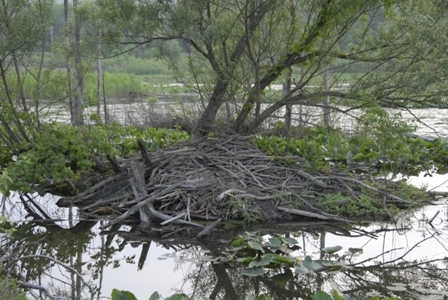Beaver Marsh

The Cuyahoga Valley National Park contains over 1500 wetlands, which remain important sanctuaries of biodiversity and habitats for endangered species. Also important for the local environment, these wetlands store nutrients and reduce erosion and flooding in the valley. Threatened by pollution from the nearby human residents, as well as invasive plants and disturbances from development, these wetlands need scientists and park rangers to continuously monitor and protect their water quality and levels.
Just south of the Village of Everett, on the western side of the Cuyahoga River, the Beaver Marsh stands as a testament to the success of community efforts to protect the valley's wetlands. Beginning in the nineteenth century, local land development drained water and resources from the original wetland. As industry, transportation, and valley populations increased, the wetland's plants and animals struggled to survive. During the latter half of the nineteenth century, the Ohio & Erie Canal passed through the marsh. Later, a local family owned and operated a dairy farm on part of the original wetland property, adding to the devastation of the area's resources. Further damaging the environment, an auto repair shop purchased the land in the twentieth century and began dumping old cars and broken parts on the former marsh.
Clean-up and restoration of the wetland began in the 1980s by the Portage Trail Group, Sierra Club, and National Park Service. These groups and local community members cleaned up trash, including car parts. Beavers, who had been absent from Ohio for over one hundred years due to fur trappers, slowly returned to the valley. The beavers' dams flooded the former wetland, creating deep pools of water so that the beavers can enter their lodges from below the surface. The help of both humans and beavers removed pollution and restored water levels to create the wetland we see today.
Images





